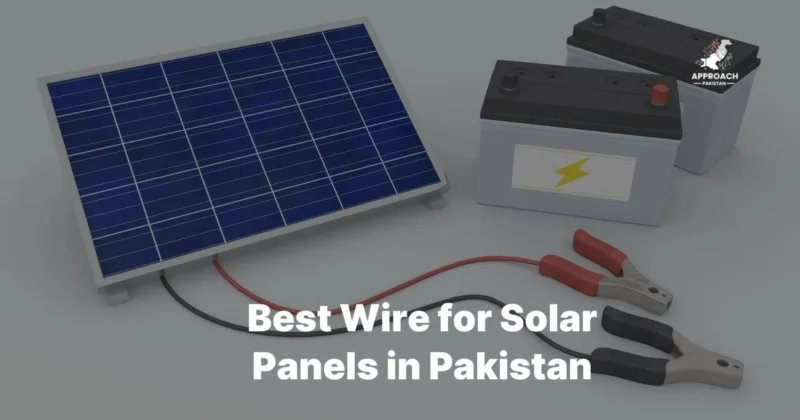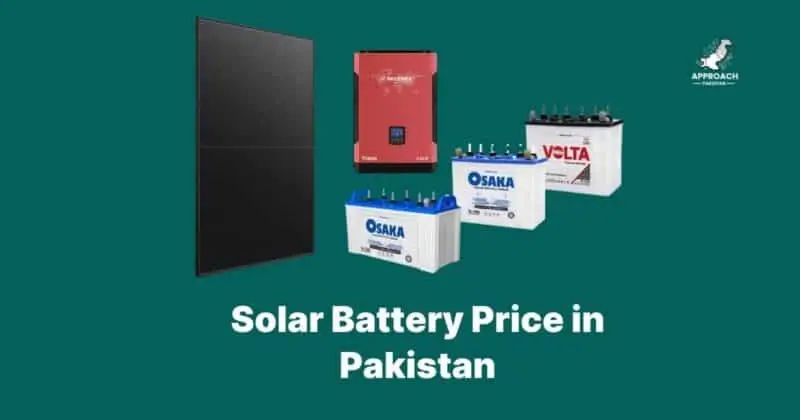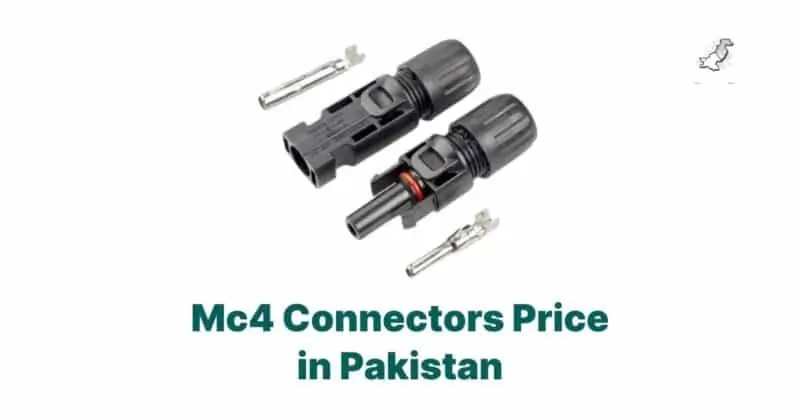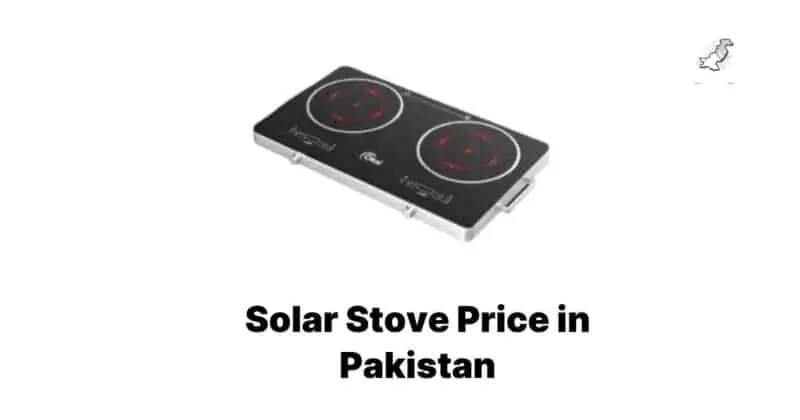MPPT Charge Controller Prices in Pakistan 2025 – Complete Guide
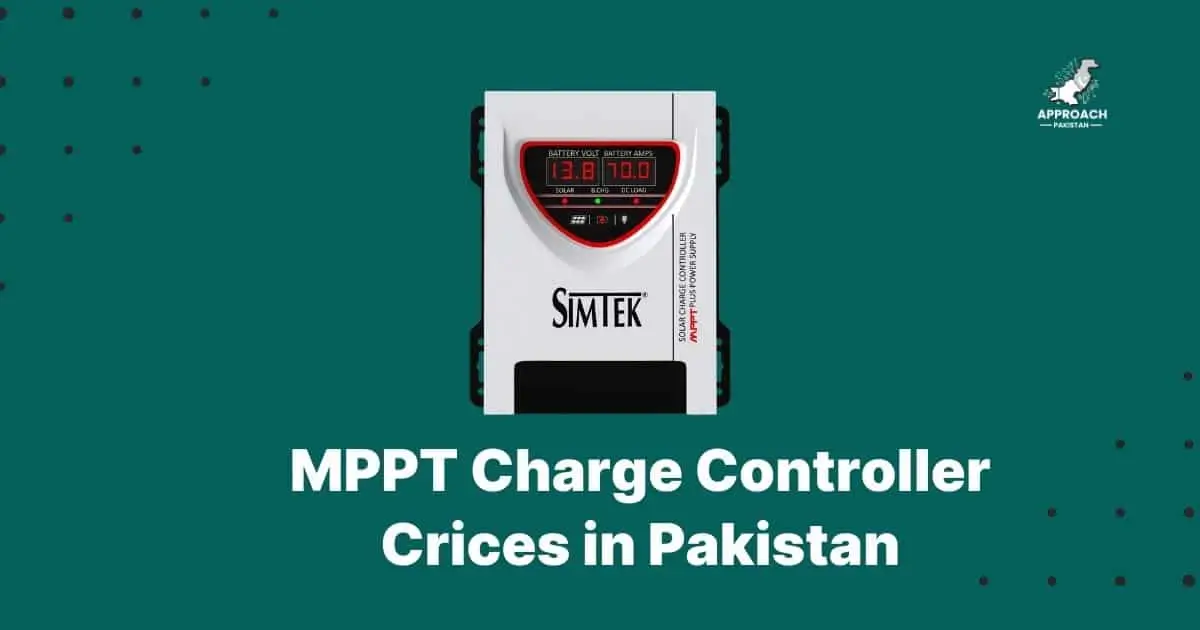
MPPT charge controller prices in Pakistan range from PKR 3,000 for basic 60A models to PKR 50,000+ for premium hybrid units. Entry-level controllers cost PKR 3,000-8,000, mid-range options PKR 8,000-20,000, while premium controllers reach PKR 20,000-50,000. Simtek, Sinko, and PowMr dominate the market with reliable performance.
Introduction: MPPT Charge Controller Rates in Pakistan
Tired of watching your electricity bill eat up 40% of your monthly income? You’re not alone.
Pakistani families spend an average of PKR 15,000-25,000 monthly on electricity bills. Power outages strike 8-12 hours daily in major cities. Your frustration with unreliable grid power and skyrocketing tariffs makes perfect sense.
Here’s the good news: MPPT charge controllers can slash your electricity costs by 70-80%. These smart devices maximize solar panel efficiency, turning sunlight into serious savings.
Current Market Overview
Pakistan’s solar market hit $2.5 billion in 2024. MPPT controllers drive this growth with 25-30% better efficiency than old PWM technology.
Import duties dropped to 5% in 2024, making quality controllers affordable. Local assembly by Simtek and others keeps prices competitive.
Why MPPT Controllers Matter
Your solar panels produce varying voltage throughout the day. Without MPPT technology, you lose 25-30% of available power.
Think of MPPT as your solar system’s brain. It finds the sweet spot where voltage and current multiply to give maximum power output.
What is an MPPT Charge Controller?
An MPPT (Maximum Power Point Tracking) charge controller is an electronic device that optimizes power transfer from solar panels to batteries. It continuously adjusts voltage and current to extract maximum available power, increasing system efficiency by 25-30% compared to basic PWM controllers.
Maximum Power Point Tracking Explained
Solar panels don’t deliver constant power. Voltage drops as current increases, creating a power curve with one optimal point.
MPPT controllers hunt for this “maximum power point” every few seconds. They adjust the electrical load to keep panels operating at peak efficiency.
How MPPT Technology Works
The controller acts like a smart transformer. It takes high voltage, low current from panels and converts it to lower voltage, higher current for battery charging.
This DC-to-DC conversion happens through rapid switching at 20,000+ times per second. Advanced algorithms track the maximum power point as conditions change.
Benefits Over PWM Controllers
| Feature | MPPT Controller | PWM Controller |
| Efficiency | 92-98% | 70-80% |
| Power Gain | 25-30% more | Baseline |
| Cold Weather Performance | Excellent | Poor |
| High Voltage Panels | Compatible | Limited |
| Price Range (PKR) | 8,000-50,000 | 2,000-8,000 |
MPPT vs PWM: Complete Comparison Guide
MPPT controllers cost 2-3x more than PWM but deliver 25-30% more power, paying for themselves within 12-18 months through increased energy production. For systems above 200W, MPPT controllers provide better long-term value despite higher upfront costs.
Efficiency Differences
PWM controllers waste power by pulling panels down to battery voltage. If your battery sits at 12V, PWM forces 18V panels to operate at 12V.
MPPT controllers extract full panel voltage, then convert it efficiently. They squeeze every watt from your expensive solar panels.
Cost-Benefit Analysis
PWM controllers save money upfront but cost more long-term. Here’s the math:
- 500W system with PWM: Generates 1.8 kWh daily
- Same system with MPPT: Generates 2.3 kWh daily
- Extra generation: 0.5 kWh daily = 180 kWh annually
- Annual savings: PKR 5,400 (at PKR 30/unit)
When to Choose Each Type
Choose PWM for:
- Small systems under 200W
- Tight budgets under PKR 10,000
- Simple setups without expansion plans
Choose MPPT for:
- Systems over 200W
- High-voltage panels (over 20V)
- Professional installations
- Maximum efficiency requirements
2025 MPPT Charge Controller Price Guide Pakistan
Entry-Level Controllers (PKR 3,000-8,000)
| Brand | Model | Capacity | Price (PKR) | Features |
| LifeTime | 70A Non-Hybrid | 70A | 8,500 | Basic LCD, Auto 12V/24V |
| Generic | 60A MPPT | 60A | 5,500 | LED indicators, PWM backup |
| Local Brand | 50A Basic | 50A | 4,200 | Manual settings |
| Import | 40A Standard | 40A | 3,800 | Basic protection |
These controllers suit small home systems up to 1kW. They lack advanced features but deliver solid performance for budget-conscious buyers.
Mid-Range Options (PKR 8,000-20,000)
| Brand | Model | Capacity | Price (PKR) | Key Features |
| Simtek | ECO Series 70A | 70A | 15,500 | Dual LCD, 110V Voc |
| Sinko | 80A Hybrid | 80A | 21,999 | Hybrid function, protection |
| PowMr | 60A MPPT | 60A | 24,999 | 160V input, 98% efficiency |
| OneTronix | Micro Trax 60A | 60A | 19,999 | Advanced tracking |
These controllers handle 1-3kW systems perfectly. They include LCD displays, multiple protection features, and hybrid capabilities.
Premium Controllers (PKR 20,000-50,000+)
| Brand | Model | Capacity | Price (PKR) | Advanced Features |
| Simtek | MPPT Plus 100A | 100A | 29,900 | 170V Voc, Dual display |
| Sinko | 100A Hybrid | 100A | 28,500 | UPS function, auto-detect |
| MIDNITE | Classic 150 | 150A | 80,000 | Professional grade |
| MIDNITE | Classic 200 | 200A | 80,000 | Grid-tie compatible |
Premium controllers suit large homes and commercial installations. They offer maximum efficiency, advanced monitoring, and professional-grade reliability.
Top MPPT Charge Controller Brands in Pakistan
Simtek Detailed Review
Simtek leads Pakistan’s MPPT market with local assembly and strong support network. Their controllers handle Pakistani weather conditions exceptionally well.
Strengths:
- Local warranty service
- Competitive pricing
- Proven reliability
- Wide dealer network
Popular Models:
- ECO Series 70A: Best value for money
- MPPT Plus 100A: Feature-rich premium option
Customer feedback shows 95% satisfaction rates with Simtek controllers. Average lifespan exceeds 8 years with proper maintenance.
Sinko Performance Analysis
Sinko offers hybrid functionality at competitive prices. Their controllers switch between solar and grid power automatically.
Key Features:
- Dual voltage compatibility
- Reverse polarity protection
- Temperature compensation
- LCD monitoring
Best Models:
- 80A Hybrid: Perfect for home backup systems
- 65A MPPT: Budget-friendly hybrid option
International Brands (PowMr, OneTronix)
International brands bring advanced features but cost more. They excel in extreme conditions and large installations.
PowMr Advantages:
- 98%+ efficiency ratings
- 160V input capability
- Advanced algorithms
OneTronix Benefits:
- Micro Trax technology
- Superior build quality
- Extended warranties
Brand Comparison Matrix
| Factor | Simtek | Sinko | PowMr | OneTronix |
| Price Range | Low-Mid | Low-Mid | Mid-High | Mid-High |
| Local Support | Excellent | Good | Limited | Limited |
| Efficiency | 95-97% | 94-96% | 98%+ | 97-98% |
| Warranty | 1-2 years | 1 year | 2 years | 2-3 years |
| Availability | High | High | Medium | Low |
How to Choose the Right MPPT Controller
The right MPPT controller should handle 125% of your maximum solar array current, match your battery voltage (12V/24V/48V), and include essential protection features. Calculate your panel current, add 25% safety margin, then choose based on budget and required features.
System Voltage Considerations (12V/24V/48V)
Your battery bank voltage determines controller requirements:
12V Systems:
- Best for small homes (under 2kW)
- Use 18V solar panels
- Controllers handle up to 100A
24V Systems:
- Ideal for medium homes (2-5kW)
- Use 36V solar panels
- Better efficiency for larger loads
48V Systems:
- Perfect for large homes (5kW+)
- Use 72V solar panels
- Maximum efficiency and safety
Amperage Sizing Guide
Calculate your system’s maximum current:
- Add up all panel maximum current ratings
- Multiply by 1.25 for safety margin
- Choose controller with higher rating
Example Calculation:
- 4 panels × 10A each = 40A total
- Safety margin: 40A × 1.25 = 50A
- Choose 60A controller minimum
Feature Checklist
Essential Features:
- LCD/LED display
- Multiple protection systems
- Auto voltage detection
- Temperature compensation
Nice-to-Have Features:
- Hybrid functionality
- Remote monitoring
- Data logging
- Mobile app connectivity
Professional Features:
- Grid-tie capability
- Advanced programming
- Communication protocols
Budget Planning
Plan your controller budget as 8-12% of total system cost:
- 1kW system: Controller budget PKR 8,000-12,000
- 3kW system: Controller budget PKR 15,000-25,000
- 5kW system: Controller budget PKR 25,000-40,000
MPPT Controller Features That Matter
LCD/LED Displays
Modern controllers show real-time data on clear displays. Look for these key readings:
Essential Display Data:
- Battery voltage and current
- Solar panel voltage and current
- Power generation in watts
- Daily energy harvest
- System status indicators
Advanced Display Features:
- Historical data
- Error codes
- Settings menus
- Multiple language support
Hybrid Functionality
Hybrid controllers manage multiple power sources automatically. They switch between solar, grid, and battery power based on availability and cost.
Hybrid Benefits:
- Automatic load switching
- Grid backup during low solar
- Battery protection during outages
- Optimized energy usage
When You Need Hybrid:
- Unreliable grid power
- Critical loads requiring backup
- Net metering applications
- Maximum energy independence
Protection Features
Quality controllers protect your expensive system components:
Battery Protection:
- Overcharge prevention
- Deep discharge protection
- Reverse polarity safety
- Temperature monitoring
System Protection:
- Short circuit protection
- Overvoltage safeguards
- Lightning protection
- Overload disconnection
Connectivity Options
Modern controllers offer various connectivity features:
Standard Connections:
- USB ports for updates
- RS485 communication
- Ethernet networking
- WiFi capability
Smart Features:
- Mobile app monitoring
- SMS alerts
- Cloud data storage
- Remote troubleshooting
Installation Guide for Pakistani Conditions
Step-by-Step Installation
Pre-Installation Planning:
- Choose location with good ventilation
- Maintain 15cm clearance around controller
- Protect from direct sunlight and rain
- Ensure easy access for maintenance
Installation Steps:
- Mount controller on wall securely
- Connect battery cables first (negative, then positive)
- Connect solar panel cables (positive, then negative)
- Connect load cables last
- Power on and configure settings
Local Electrical Codes
Follow Pakistan’s electrical safety standards:
- Use proper gauge wiring (see cable sizing chart)
- Install appropriate fuses and breakers
- Maintain proper grounding
- Use weatherproof enclosures outdoors
Required Certifications:
- IEC 61215 for solar panels
- IEC 62109 for inverters
- Local utility approvals for grid-tie
Safety Considerations
Personal Safety:
- Always wear safety equipment
- Work during daylight hours
- Have qualified electrician verify connections
- Keep fire extinguisher nearby
System Safety:
- Install proper disconnects
- Use surge protection devices
- Label all circuits clearly
- Create emergency shutdown procedure
Common Mistakes to Avoid
Wiring Errors:
- Undersized cables cause voltage drops
- Poor connections create fire hazards
- Missing fuses leave system unprotected
- Reversed polarity damages equipment
Location Mistakes:
- Installing in direct sun overheats controller
- Poor ventilation reduces lifespan
- Difficult access complicates maintenance
- Moisture exposure causes corrosion
Where to Buy MPPT Controllers in Pakistan
Authorized Dealers
Major Cities Coverage:
Lahore:
- Solar World, Mall Road
- Green Energy Solutions, Gulberg
- Pak Solar Systems, Johar Town
Karachi:
- Renewable Energy Center, Clifton
- Solar Power Pakistan, Gulshan
- Energy Solutions, DHA
Islamabad:
- Capital Solar, Blue Area
- Metro Solar, F-10 Markaz
- Power Systems, I-8 Markaz
Online Marketplaces
Daraz.pk:
- Largest selection
- Customer reviews
- COD available
- Return policies
OLX Pakistan:
- Used equipment options
- Local sellers
- Negotiable prices
- Direct contact
Brand Websites:
- Factory warranties
- Latest models
- Technical support
- Bulk pricing
Local Solar Shops
Every major city has solar equipment shops. They offer:
- Hands-on product inspection
- Local technical support
- Installation services
- Competitive pricing
What to Verify:
- Authorized dealer status
- Warranty terms
- After-sales service
- Technical expertise
Warranty Considerations
Standard Warranties:
- Local brands: 1-2 years
- International brands: 2-3 years
- Premium models: Up to 5 years
Warranty Coverage:
- Manufacturing defects
- Component failures
- Performance guarantees
- Replacement policies
Extended Warranty Options:
- Available for premium models
- Covers additional 2-3 years
- Includes preventive maintenance
- Priority technical support
Maintenance and Troubleshooting of MPPT Charge Controller
Regular Maintenance Schedule
Monthly Tasks:
- Clean display and check readings
- Inspect connections for corrosion
- Verify proper ventilation
- Record performance data
Quarterly Tasks:
- Tighten all electrical connections
- Check cooling fan operation
- Update firmware if available
- Clean surrounding area
Annual Tasks:
- Professional inspection
- Calibration verification
- Warranty status review
- Performance analysis
Common Problems and Solutions
Display Issues:
- Blank screen: Check fuse and connections
- Dim display: Adjust brightness settings
- Error codes: Consult manual for meanings
- Flickering: Loose internal connections
Charging Problems:
- No charging: Verify panel connections
- Low charging: Check panel shading
- Overcharging: Inspect battery condition
- Inconsistent charging: Clean connections
Protection Activations:
- Overvoltage: Reduce panel string size
- Overcurrent: Check for short circuits
- Temperature: Improve ventilation
- Low voltage: Test battery condition
When to Replace Your Controller
Performance Indicators:
- Efficiency drops below 90%
- Frequent protection activations
- Display or communication failures
- Physical damage or corrosion
Age Factors:
- Controllers over 8 years old
- Outdated technology
- Discontinued support
- Lack of spare parts
Upgrade Opportunities:
- System expansion requirements
- New feature availability
- Improved efficiency models
- Better monitoring capabilities
Is MPPT Worth the Investment?
MPPT controllers pay for themselves within 12-24 months through increased energy production. A PKR 20,000 MPPT controller generates an extra PKR 8,000-12,000 annually compared to PWM alternatives, providing 25-40% return on investment plus enhanced system reliability.
Cost-Benefit Calculations
Example 2kW System:
PWM Setup:
- Controller cost: PKR 8,000
- Annual generation: 2,400 kWh
- Annual savings: PKR 72,000
MPPT Setup:
- Controller cost: PKR 18,000
- Annual generation: 3,000 kWh
- Annual savings: PKR 90,000
ROI Calculation:
- Extra investment: PKR 10,000
- Extra annual savings: PKR 18,000
- Payback period: 6.7 months
Payback Period Analysis
| System Size | PWM Cost | MPPT Cost | Extra Annual Savings | Payback Months |
| 1kW | PKR 5,000 | PKR 12,000 | PKR 8,400 | 10 |
| 2kW | PKR 8,000 | PKR 18,000 | PKR 18,000 | 7 |
| 3kW | PKR 10,000 | PKR 25,000 | PKR 27,000 | 7 |
| 5kW | PKR 15,000 | PKR 35,000 | PKR 48,000 | 5 |
Long-Term Savings Projection
10-Year Analysis (3kW System):
Year 1-3: Extra savings PKR 27,000 annually Year 4-6: Electricity rates increase 15% annually Year 7-10: Additional equipment longevity benefits
Total 10-Year Benefit: PKR 350,000+ Initial Extra Investment: PKR 15,000 Net Benefit: PKR 335,000+
Future Trends in MPPT Technology
Smart Controllers
Next-generation controllers integrate artificial intelligence for predictive optimization. They learn your usage patterns and weather conditions.
AI Features:
- Predictive power management
- Adaptive charging algorithms
- Maintenance predictions
- Performance optimization
IoT Integration
Internet of Things connectivity transforms controllers into smart grid components:
Connected Features:
- Real-time monitoring
- Remote diagnostics
- Automatic updates
- Grid integration
Benefits:
- Reduced maintenance costs
- Improved reliability
- Better system optimization
- Enhanced user experience
Emerging Technologies
Advanced Materials:
- Silicon carbide semiconductors
- Improved heat dissipation
- Higher switching frequencies
- Better efficiency ratings
New Algorithms:
- Machine learning optimization
- Weather prediction integration
- Dynamic load management
- Grid stability support
FAQs

